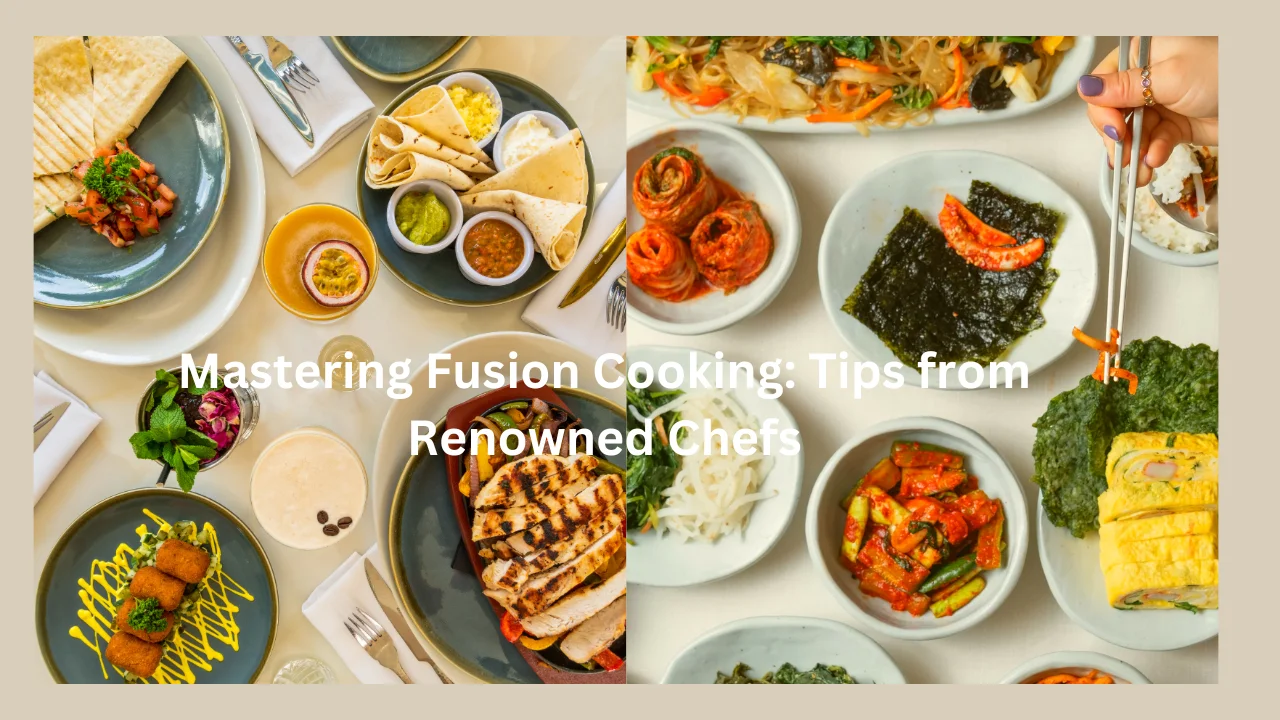Fusion cooking, where culinary traditions from different cultures come together in harmonious new ways, is a dynamic and ever-evolving field. The art of combining diverse ingredients and techniques requires not only creativity but also a deep understanding of both culinary traditions and modern innovations. To help you master this exciting genre of cooking, we’ve gathered insights from renowned chefs who have made their mark in the world of fusion cuisine. Here are their top tips for creating standout fusion dishes.
1. Understand the Foundations
Chef José Andrés: Known for his inventive takes on traditional Spanish cuisine, Chef Andrés emphasizes the importance of understanding the basics of each cuisine you plan to fuse. “Before you start mixing, you need to know the fundamentals of the individual cuisines. It’s like knowing the rules before you can break them creatively.”
Tip: Immerse yourself in the culinary traditions of the cuisines you’re combining. Study their ingredients, cooking techniques, and flavor profiles to ensure that your fusion dishes are authentic and well-balanced.
2. Balance Flavors Thoughtfully
Chef David Chang: Founder of Momofuku, Chef Chang is renowned for blending Asian flavors with traditional Western dishes. He advises, “When creating fusion dishes, balance is key. You want to ensure that no single flavor overwhelms the others. Use contrasting flavors and textures to achieve a harmonious result.”
Tip: Pay attention to the balance of sweet, sour, salty, bitter, and umami flavors. Use contrasting elements to create complexity, such as combining spicy with sweet or crunchy with creamy.
3. Respect Traditional Techniques
Chef Nobu Matsuhisa: A pioneer in Japanese-Peruvian fusion cuisine, Chef Matsuhisa highlights the importance of respecting traditional cooking methods while experimenting. “Fusion doesn’t mean ignoring tradition. Instead, it’s about respecting the techniques and ingredients of each culture while creating something new.”
Tip: Integrate traditional techniques from each cuisine into your fusion dishes. This respect for technique ensures that the final product is authentic and flavorful.
4. Experiment with Ingredients
Chef Anita Lo: Known for her Asian-inspired French cuisine, Chef Lo encourages culinary experimentation. “Don’t be afraid to try unconventional ingredient pairings. Fusion cooking is about pushing boundaries and discovering new flavor combinations.”
Tip: Experiment with unusual ingredient pairings and be open to unconventional combinations. Incorporate ingredients from different cuisines in unexpected ways to create unique dishes.
5. Start Simple
Chef Roy Choi: A trailblazer in Korean-Mexican fusion, Chef Choi suggests starting with simple combinations before moving on to more complex dishes. “Begin with straightforward fusions that highlight one or two elements from each cuisine. This helps you understand how the flavors interact.”
Tip: Begin with simpler fusion recipes that combine familiar elements from each cuisine. Once you’re comfortable, you can experiment with more complex combinations.
6. Focus on Texture
Chef Massimo Bottura: Renowned for his creative Italian cuisine, Chef Bottura believes that texture is as important as flavor. “Textures can make or break a dish. Combining different textures can elevate a fusion dish from good to great.”
Tip: Consider the textures of each component in your dish. Combine crisp, smooth, and chewy elements to create a multi-dimensional eating experience.
7. Use Fresh and High-Quality Ingredients
Chef Alice Waters: A champion of seasonal and local ingredients, Chef Waters stresses the importance of using fresh and high-quality components. “The quality of your ingredients will significantly impact the outcome of your fusion dishes. Freshness and quality are crucial.”
Tip: Source the freshest and highest-quality ingredients for your fusion dishes. Seasonal produce and premium proteins enhance the overall flavor and presentation of your creations.
8. Pay Attention to Presentation
Chef Wolfgang Puck: Known for his upscale fusion cuisine, Chef Puck emphasizes that presentation matters. “Fusion dishes should not only taste great but also look visually appealing. The presentation can make a significant difference in the dining experience.”
Tip: Invest time in the presentation of your fusion dishes. Use colorful ingredients and artistic plating techniques to make your dishes visually striking.
9. Get Feedback and Iterate
Chef Tom Colicchio: An advocate for continuous improvement, Chef Colicchio encourages getting feedback. “Taste your dishes and seek feedback from others. Be willing to iterate and refine your recipes based on the input you receive.”
Tip: Share your fusion dishes with friends, family, or colleagues and gather feedback. Use their insights to make adjustments and improve your recipes.
10. Embrace Creativity and Innovation
Chef René Redzepi: A leading figure in modern cuisine, Chef Redzepi champions creativity. “Fusion cooking is all about pushing the boundaries and thinking outside the box. Embrace your creativity and let your imagination guide you.”
Tip: Allow your creativity to lead your fusion cooking experiments. Don’t be afraid to take risks and innovate, as this can lead to exciting and unique culinary creations.
Conclusion
Mastering fusion cooking is a journey that blends knowledge, creativity, and respect for culinary traditions. By understanding the fundamentals, balancing flavors, experimenting with ingredients, and focusing on quality and presentation, you can create fusion dishes that are both innovative and delicious. Drawing inspiration from renowned chefs, you’ll be well on your way to making your mark in the world of fusion cuisine. So, gather your ingredients, embrace your creativity, and start crafting your next culinary masterpiece.
